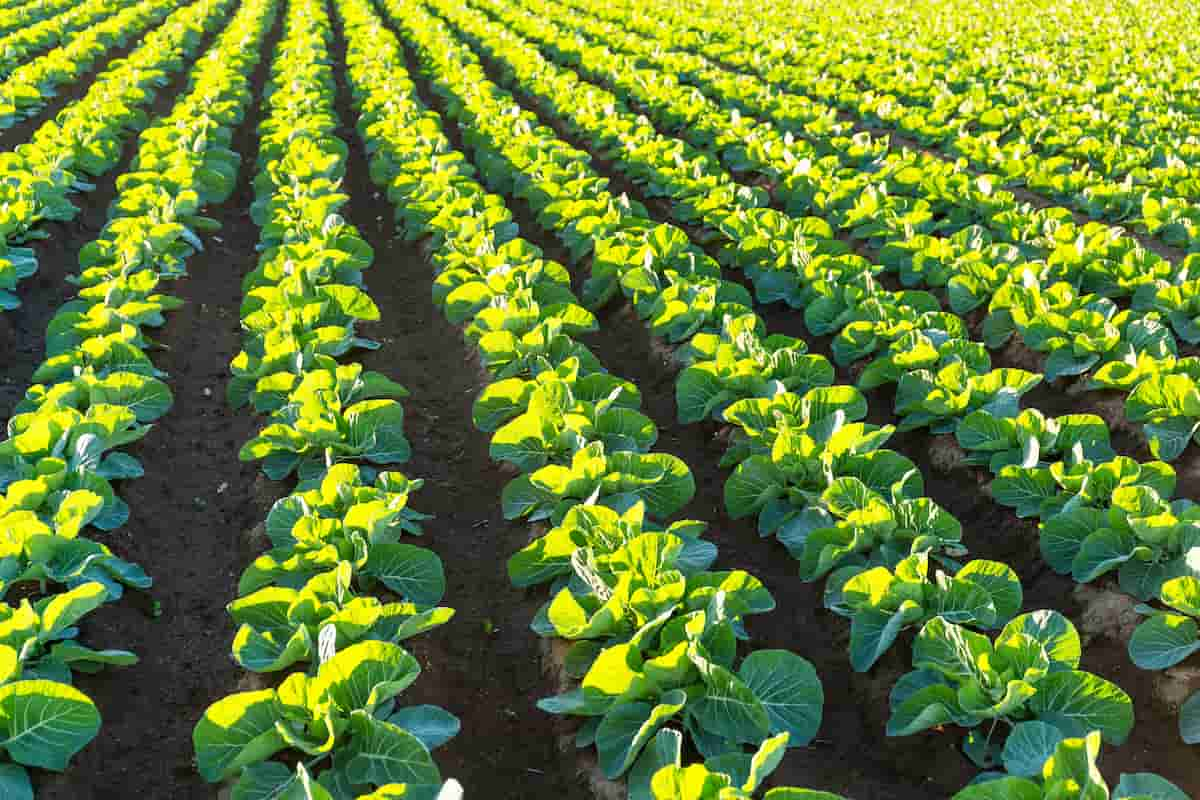Vegetable farming is an important and lucrative business that has existed for thousands of years. With a growing global population arises an increased need for nutritious food. Vegetable farming can be profitable, but it requires careful planning and execution. A business plan is critical for anyone starting a vegetable farming business. It outlines your goals, objectives, strategies, and tactics for running your farm.

It helps you identify potential challenges, evaluate market trends and competition, and develop a financial plan. This blog post will discuss the key rules to start a successful vegetable farming business plan. We will provide accurate and relevant data and figures to help you make informed decisions about your business.
We will cover everything from market analysis to crop selection, production planning, marketing and sales, financial planning, and legal and regulatory considerations. Whether you’re a seasoned farmer or a beginner looking to start your own vegetable farming business, this blog post will provide the information you need to succeed. So, let’s explore more.
Vegetable Farming Business Plan
What is Vegetable Farming
Vegetable farming is cultivating and harvesting vegetables for consumption or sale. It can involve growing various vegetables, including leafy greens, root vegetables, legumes, and more. Vegetable farming can occur on a small scale, such as in a backyard or community garden, or on a large scale, such as in a commercial vegetable farm. As demand for fresh, healthy produce increases. Vegetable farming is a profitable industry globally. When starting a vegetable farming company, understanding vegetable types and market demand is vital for present trends and recommendations.
- Leafy vegetables: Their health benefits and versatility make them popular. Kale, arugula, and lettuce are common.
- Fruit vegetables: Because of their sweetness and nutritional worth, peppers, cucumbers, and tomatoes are popular. Raw salads and snacks use these veggies.
- Root vegetables: Carrots, radishes, and sweet potatoes are vitamin and mineral-rich. Sauces and soups use these long-lasting veggies.
- Bulb vegetables: Garlic, onion, and fennel add taste and aroma. They last long and are used in many dishes.
Artichokes, cauliflower, and broccoli are high-fiber, antioxidant-rich flower vegetables. Mediterranean and Asian dishes use them.
Strategies for Starting a Vegetable Farming Business
- Develop a solid business plan: A well-structured business plan is crucial to the success of any business, including vegetable farming. It helps you identify your goals, strategies, target market, competition, and financial projections.
In case you missed it: Backyard Vegetable Garden Layouts: A Beginners Guide

- Determine land area for vegetable farming: Before starting your farming business, you must identify the required land area. You can start small and gradually expand your operations as your business grows.
- Choose the right vegetables: The selection of vegetables should be based on agro-climatic conditions and local market demand. You should also consider the potential for exporting your products to other regions or countries.
- Select the right plants: The plants should suit your area’s soil and weather conditions. Consider the species’ yield, shelf life, and disease resistance before deciding.
- Proper irrigation: Proper irrigation is essential for the success of your vegetable farming business. You can choose from various irrigation systems, including drip irrigation, sprinkler irrigation, and flood irrigation.
- Plan for harvesting and storage: You need to plan for harvesting and storage to ensure that your vegetables are harvested at the right time and stored properly. It will help you maintain the quality and freshness of your produce.
- Calculate the working capital cost: It is important to calculate the working capital required for your vegetable farming business. It will help you determine the cost of inputs such as seeds, fertilizers, pesticides, labor, and other expenses.
- Arrange the required finance: You must arrange the required finance for your vegetable farming business. It can come from personal savings, loans, grants, or partnerships.
Vegetable Farming Techniques and Factors of Production
The factors and techniques used in production are extremely important to the success of crop yield in the vegetable farming industry. The main variables influencing the growth and development of vegetable plants are the weather, including temperature, moisture, daylight, and breeze conditions. Crop yield is also significantly influenced by the type and grade of soil. Producing high-quality products requires effective disease and insect management, irrigation, and soil preparation and management.
Vegetable plants can be multiplied through seeds or vegetative parts planted in the yard, where they will eventually reach maturity. A larger crop yield can be achieved by using proper cultivation methods, such as stirring the soil in between rows of vegetable plants. Vegetables must be harvested at the proper state of growth for the product’s quality to reach the consumer. For the growing season, efficient management and marketing strategies can guarantee a consistent flow of the desired product.
Importance/Scope of Vegetable Farming Business
Vegetable production is a rich source of vitamins and minerals essential for good health. They are also an important source of income for farmers. They can contribute significantly to reducing rural poverty and unemployment in developing countries. Moreover, vegetables have aesthetic value and can be used for medicinal purposes. The flexibility in plant production programs makes vegetable farming more profitable than fruit farming, where changing the production program is difficult and expensive.
Key Rules in Managing a Vegetable Farming Business
- Sowing and planting: Your crops’ sowing and planting times rely on your region’s climate and crop needs.
- Planting method: Producing transplants in greenhouses and planting in the open can help vegetable farmers meet plant requirements.
- Profitable vegetable production requires good farm management. Consider labor, crop trouble, and equipment.
- Labor requirements: Some vegetable crops require more care than others, so it’s essential to know how much time you have to grow and sell them.
- Production techniques: Horticultural production methods, environmental factors, and management policies affect vegetable quality. Hydroponic and soilless vegetable cultivation improves crop yield and resource efficiency.
- Production plan: Once you have a clear vision for your vegetable farming company, create a production plan that includes capital, infrastructure, machinery, management skills, planting and harvesting schedules, and post-harvest and sanitation needs. Investment and cash operating requirements, crop production and packaging equipment and infrastructure, and product management and marketing skills. Plant varieties and client desires must guide planting and harvesting schedules. Sanitation and cooling after harvesting are important to keep food fresh. Record-keeping helps find profitable crops and practices and areas for improvement.
- Market approach: Small vegetable farming businesses can use marketing strategies such as collectively selling their products, producing high-quality vegetables, and standardizing their offerings. Cooperative or committee collection and sale through outlets like malls can be effective, with a welfare strategy for farmers in profit distribution. Government subsidies may also be available for those who use collective approaches.
Some of the Best Crops for Vegetable Farming Business for High Profits
Cucumbers, squash, beans, tomatoes, leafy greens, potatoes, peppers, beetroot, radishes, and cabbage are high-profit crops. Twelve thousand cucumber plants per acre produce 5–10 kg per cycle. Beans give 100–120 quintals per hectare, while tomatoes yield 10–20 tonnes per acre. Skilled potato growers can harvest 16–28 tons per acre. Pepper gives 1 tonne per hectare, and beetroot 25–30 tonnes. Radishes produce 200-300 fresh radishes per hectare, while cabbage produces 80–120 quintals.
In case you missed it: How to Grow Vegetables Organically: A Step-By-Step Guide for Beginners

Conclusion
Key rules include conducting thorough market research, choosing the right location, investing in high-quality equipment, building a strong team, and staying up-to-date on industry trends. With dedication and hard work, your vegetable farming business can thrive and provide fresh produce to your local community.
- Feed Your Flock for Less: Top 10 Tips to Save on Chicken Feed
- Ultimate Guide to Ossabaw Island Hog: Breeding, Raising, Diet, and Care
- Hatching Answers: The Top 10 Reasons Your Chickens Aren’t Laying Eggs
- Eggs and Economics: Breaking Down the Cost of Raising Backyard Chickens
- Defend Your Greens: Proven Methods to Keep Iguanas Out of Your Garden
- Ultimate Guide to Cinnamon Queen Chicken: A Comprehensive Guide for Beginners
- Ultimate Guide to California Tan Chicken: Breeding, Raising, Diet, Egg-Production and Care
- Ultimate Guide to Marsh Daisy Chicken: Breeding, Raising, Diet, and Care
- 10 Types of Chicken Farming Businesses You Can Start for Profits